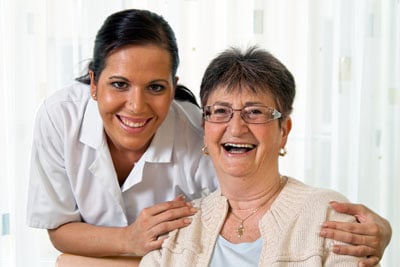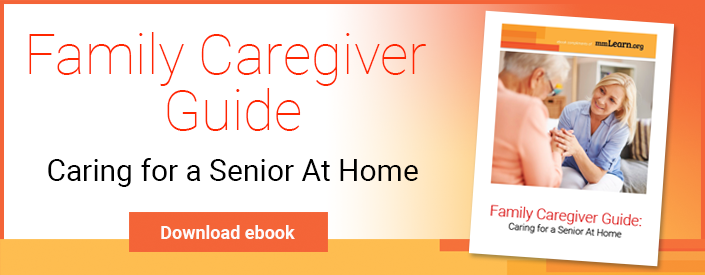The importance of cultural competence for caregivers cannot be overstated. Not only is acknowledgement of each patient's cultural, religious and spiritual beliefs the responsibility of caregivers according to the Joint Commission, but it's also a critical component in ensuring that all patients receive the highest quality of care.
 Touch can be a powerful tool in some cultures.
Touch can be a powerful tool in some cultures.
But while talking about cultural competence is one thing in theory, what does it entail in the everyday life of a caregiver? Let's count down six ways to practice culturally competent caregiving.
1. Remember that each patient is an individual, and should be treated as such.
While every patient is a product of their background, each is also an individual with unique needs and preferences. Cultural sensitivity necessitates acknowledging the importance of culture without making assumptions about a patient based on race, country, religion, sexuality or culture.
2. Understand the barriers to communication.
People from different cultures are often divided by barriers related to everything from language to economics to social differences. Whenever possible, strive to identify and overcome any of these challenges which may ultimately impede access to services.
3. Accept that different cultures practice different kinds of medicine.
Western healthcare practices and philosophies are in their infancy compared to other types of medicine which have been practiced by people all over the world for generations. Maintain an open mind with patients and families who wish to consider alternatives or complements to conventional medical treatment.

Cultural competence supports positive relationships between patients and caregivers.
4. Respect cultural differences pertaining to body language.
Not all people ascribe to the same beliefs about everything from eye contact to physical distance. Understanding and using appropriate body language as it applies to each individual can help patients feel more comfortable and respected.
5. Welcome family involvement while maintaining your role as a patient advocate.
Caring for patients usually includes managing family, as well. Considering each family's unique background and experiences -- comprising everything from accepting their choices about ethical issues to supporting their religious beliefs, practices and preferences -- can help you deliver the best care.
6. Look in as well as out.
It's also important to keep in mind that cultural competence is an ongoing process which begins by looking inward. The more you understand how your own culture and background have shaped your own attitudes and beliefs, the more you'll be able to understand how who you are impacts -- subconsciously or otherwise -- your ability to effectively care for patients different than yourself.
Ultimately, cultural competence isn't at all about highlighting our differences, but instead about finding common ground. It's not a surprise, therefore, that these six cultural sensitivity practices share a common theme: They're all guided by a relentless commitment to open-mindedness, non-judgment, and respect.
While it would be difficult to know and understand everything about every culture, adopting these practices can help caregivers best meet the needs of culturally diverse patients and their families. Additionally, there are culture-specific sensitivity training resources available, such as mmLearn.org's "Cultural Sensitivity Videos for Jewish Seniors" and "A Caregiver's Guide and More in Caring for Jewish Seniors."

In some cultures, eye contact conveys respect. In
others, it can be interpreted as confrontational.
One last thing to keep in mind: It's not always possible to understand particular aspects of a patient's culture. While doing research to expand your cultural knowledge can offer invaluable insight how best to interact with patient from particular backgrounds or cultures, it's not always clear how to proceed.
The best way to ensure that you're delivering the best possible care for the situation? Ask questions and listen to answers.
While many people fear that making personal inquiries is rude or out of bounds, maintaining open, accurate lines of communication is one of the best ways to foster a positive, culturally-sensitive, caregiving environment.
If you're looking for a comprehensive resource for family caregivers, check out our online Family Caregiver Guide.mmLearn.org offers a large library of free videos for caregivers of older adults, covering topics pertaining to senior care. Whether you are a healthcare professional or a family caregiver, if you are caring for an older adult, we know that you will find mmLearn.org an essential learning and guidance tool for all of your caregiver training needs. For more useful content for caregivers, access our free online caregiver videos today.
